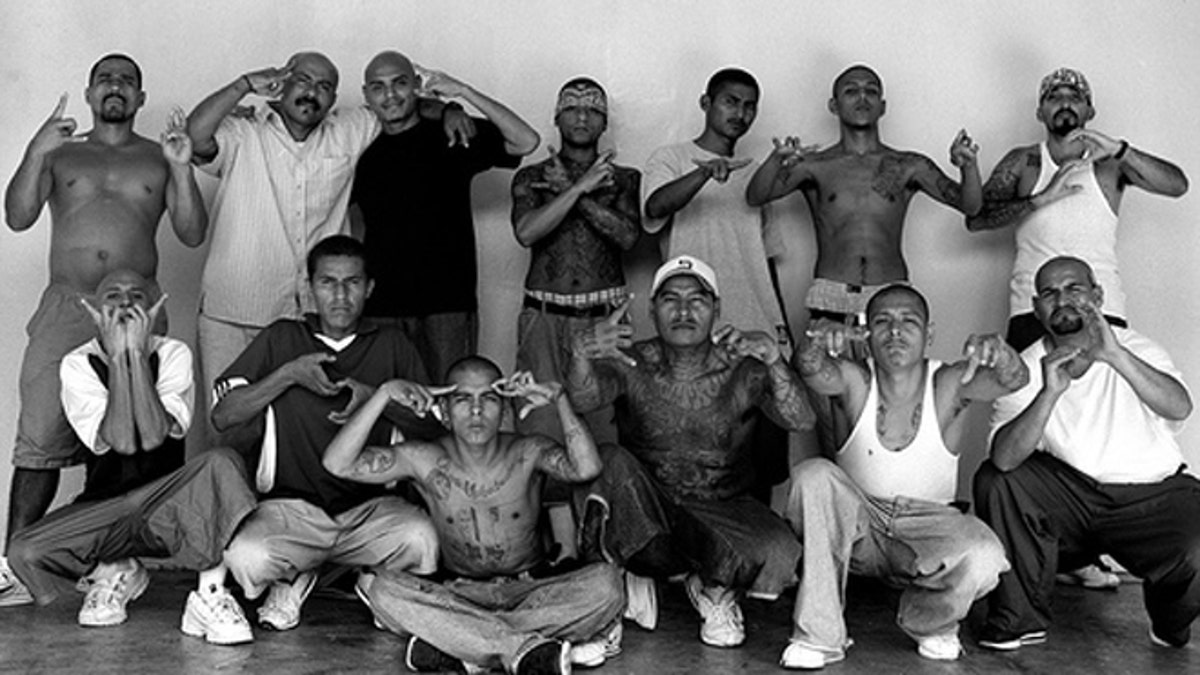
(Matheus Kawasaki @ Flickr)
It’s an image ingrained in the culture of both the United States and countries throughout Central America: the heavily-tattooed, ruthless gang members on the prowl for victims.
These inked-up thugs – such as members of the feared Mara Salvatrucha (or MS-13) and Barrio 18 street gangs operating in El Salvador and Honduras – have been blamed in part for the surge in unaccompanied minors streaming north toward safety in the U.S. and have kept border agents busy making sure that none of these hoodlums enter the country.
While law enforcement officials in places like Los Angeles and throughout the federal prison system have been studying gang tattoos for years to get a grasp on affiliations and meanings, the countries in Central America have only recently latched on to this practice as violent crime rates spiral out of control throughout these nations.
Police in Honduras now claim to have cracked the code on the symbolic meaning of these tattoos even as more and more gang members hide their ink amid a crackdown on gangs in the country.
One of the most popular images found on gang members is two hands clasped together and fingers facing skyward in prayer posture. Experts interviewed by Honduras’ El Heraldo newspaper say that this tattoo is not a representation of any religiosity on the part of the gang member, but a plea to "forgive me mother for my crazy life."
"This phrase means that there are normal moments in the life of gang member or a gang that let you think properly about the actions carried out in the course of one’s own life,” the newspaper reported. “As a result the position of consciousness arises because [the gang member] realizes he is doing something wrong which is against morality and decency, even taking the life of one or more persons.”
Other religious tattoos, such as Jesus or the Virgin of Guadalupe, are found throughout the Central American gang world and represent similar meanings, although the Christ tattoo is almost exclusively used by MS-13.
The yin yang is also a popular tattoo in gangs throughout Central America. While most commonly associated with Asian gangs, it has become increasingly popular among the MS-13 street gang in El Salvador.
The design, experts say, symbolizes the balance between good and evil, which the gang members have achieved through force, violence and death.
One the most notorious and widespread tattoos in any gang culture is the spider web, meant to represent power and a gang's expansion into new territories. It is found mostly on elbows, shoulders or knees.
Experts recommend that young people thinking of getting a tattoo should study what they want carefully and make sure that the ink they get doesn’t have some subliminal meaning that could have them hurt or even killed unintentionally.
“Just having a tattoo alluding to one of those groups and crossing to some other group’s turf is an offense, because the person is identifying himself or promoting a different group,” an unnamed expert interviewed by El Heraldo said.
Tattoos, however, are becoming less prevalent among gang members in Honduras after the country cracked down in 2005 on gang associations by threatening people with ties to street gangs with nine to 12 years in prison and a hefty fine.
With tattoos being easy identifiers of gang associations, some members of gang’s leadership have warned their fellow brutes to cover up their body art or put it on a place of the body that is not easily seen.
Younger gang members have been saved from the cover-up because they came into the groups after the gang laws went in place, but older members have been forced to wear long sleeves in the hot weather and even caps to cover up their head tattoos.
Follow us on twitter.com/foxnewslatino
Like us at facebook.com/foxnewslatino
